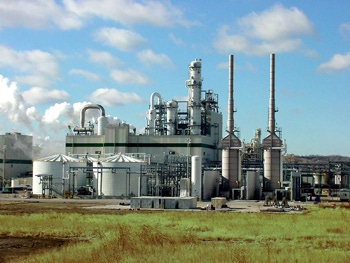Bio-based plastics stand up to sustainability scrutiny

A new study published in the Journal of Cleaner Production for the first time attempts to make a qualitative evaluation of the sustainability of the different bioplastics that are commercially available or soon to be on the market. The authors looked at environmental, health and safety impacts throughout the li
NatureWorks
fe cycles of these materials within the context of the 12 principles for sustainable biomaterials compiled by the Sustainable Biomaterials Collaborative (SBC), a coalition of organizations that advances the introduction and use of biobased products.
Entitled "Sustainability of bio-based plastics: general comparative analysis and recommendations for improvement", the study reviewed each type of bioplastic according to a variety of sustainability criteria derived from SBC's 12 principles. These criteria included the use of genetically modified organisms and hazardous pesticides to grow the crops used as feedstock, the use of hazardous chemicals during production and processing, the use of untested nanomaterials, potential workplace hazards, disposal options, disposal options and efficiency in the use of water, energy and materials.
The results are summarized in two Bioplastics Spectrums: the Bioplastics Spectrum for Occupational Health and the Bioplastics Spectrum for the Environment, which run from red ("Avoid") to green ("Preferred") and thus offer a quick visual comparative overview of the occupational health, safety and environmental impacts of the different materials.
From a health and safety perspective, the polyhydroxyalkanoates (PHAs), polylactic acid (PLA) and starch all came in on the green end of the spectrum. In the environmental analysis, starch, PLA, urethanes, PHA, zein and soy protein fell into this "preferred" category. By contrast, nano-biocomposites were on the "avoid" end of the scale in both analyses, mainly because so little is known about the health effects of nanoparticles - bio or otherwise - in (bio)composites. And, while none of the bioplastics could be considered fully sustainable, in the sense that they were 100% compliant with the criteria derived from SBC's 12 principles, the report cited sustainability improvements relative to petroleum-based plastics in aspects such as biodegradability, lower energy consumption and lower CO2 emission during production and compostability, for nearly all the bioplastics studied.
To read the entire blog, please click here.
About the Author(s)
You May Also Like


